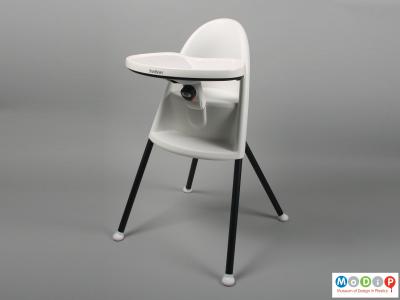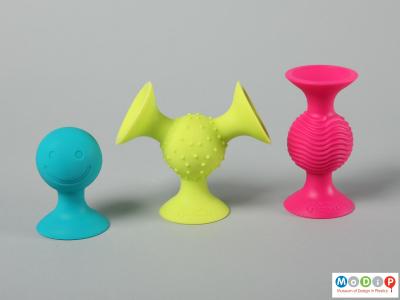Traditionally an infant’s highchair took the form of a small chair, appropriately proportioned, on elongated legs, in which a child could be securely fastened and pushed up to the table at mealtimes. It served to include a child in the social activity of family meals in a convenient way for the parent. The addition of a tray meant that the messy business of learning to feed independently could be isolated from the adult table.
Originally made from wood the highchair could be both functional and decorative. The mid-20th century saw the introduction of chromed metal frames and brightly coloured, padded, wipe-clean seats and plastic trays. Subsequently their design has been governed by a raft of safety standards.
This high chair (1), made by Swedish company Babybjӧrn in 2015, has an ergonomically designed moulded polypropylene (PP) seat with softly rounded curves and edges.
It is designed to be easily cleaned and has a removable tray made from acrylonitrile butadiene styrene (ABS), a material renowned for its strength and finish. The tubular legs are made from painted steel. The adjustable table locks into place preventing the child from standing up and thus removing the need for restraining straps.
It folds into a compact size for storage and transport and the use of plastics materials means that it is lightweight whilst maintaining strength. It is thoughtfully designed to be functional, practical and stylish.
Keeping a child entertained whilst feeding or travelling can be difficult. These brightly coloured Pipsquigz (2) tactile toys, developed by the Fat Brain Toy Co., can be conveniently secured to a smooth surface and to each other using their suction pads. They help the child to develop its auditory and tactile senses, motor skills, hand eye coordination, and balance through holding onto the firmly stuck toy. Made from BPA free high quality silicone, they are safe for babies to handle and chew.


